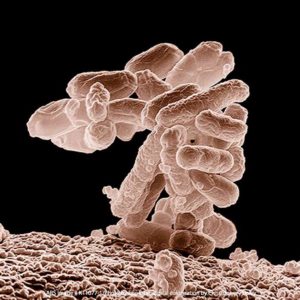Shiga toxin-producing Escherichia coli (STEC) O157:H7 is a well-recognized cause of bloody diarrhea, hemolytic-uremic syndrome (HUS) and thrombotic thrombocytopenic purpura (TTP). Non-O157 STEC contribute to this burden of illness but have been under-recognized as a result of diagnostic limitations and inadequate surveillance. The six most common strains of non-O157 include O26, O45, O103, O111, O121, and O145. If you were sickened by any of these, contact our E. coli lawyers for a free consultation: 1-888-377-8900 toll free.
E. coli O26
- An outbreak of O26 illnesses in 2000 was the first of its kind, with several people from several locations getting sick. It was discovered using molecular subtyping surveillance, where reports of illness, along with DNA “fingerprinting” was used to find people who were part of the outbreak (Werber). The investigation led to a specific type of beef as the culprit.

- In 2001, a toddler died after suffering from severe bloody diarrhea caused by O26. Although in most cases of foodborne illness there is not an investigation unless two or more people are sickened, health officials did investigate. An interview with the parents and inspection of their home found that their water source was a water facility run by the local community for uses such as bathing, washing dishes, etc. It was not meant for drinking. Testing was done, and the same strain of O26 that sickened the child was found in samples taken from two source-points of the community water facility.
- A 2022 E. coli O26 outbreak was linked to Torero’s Mexican Restaurant in Renton Washington. At least three people were sickened with STEC. According to the King County health department, symptoms included, “…diarrhea (often bloody), abdominal cramping, nausea, and vomiting.” Public health investigators, “…identified inadequate handwashing facilities and improper storage of raw meats as potential risk factors for this outbreak.”
E. coli O45
- In 2005, an employee of a New York prison that worked in the kitchen had an O45 infection and did not wash his hands well enough after having a bowel movement. Feces on his hands got onto food, transferring cells of O45 to the food. The result was thirteen inmates getting infections, suffering from severe pain and bloody diarrhea. This is the first known outbreak of STEC O45 infections in the United States (1).
- State fairs are wonderful, but they are also a breeding ground for E. coli if a children’s barn or other attraction where children can pet animals are on the premises. There have been several outbreaks linked to fairs, and in one of them, a child got sick from O45 and developed HUS renal failure. This was an unusual situation, with most of the people getting sick from an O157 strain and this one little person getting sick from E. coli O45.
E. coli O103
An E. coli O103 outbreak in Kentucky has, as or March 28, 2019 sickened 19 people. Mostly kids. The outbreak is being linked by the Kentucky Department of Public Health to fast food consumption, but has not yet narrowed down the specific source.
An E. coli O103 outbreak in northwestern Missouri sickened three people after they consumed cheese made from raw (unpasteurized) milk. Some people believed this kind of cheese was safe because it had aged, but any product made from raw milk is dangerous because it is not heated (pasteurized) to kill bacteria.
E. coli O111
There have been several outbreaks of O111 since 1990. The largest outbreak as of the date this was written was in Oklahoma. Three hundred and thirteen (313) people ate at a restaurant in Locust Grove, Oklahoma. With the help of the CDC, state health officials determined that contaminated water was the source. Of the hundreds of people sickened, 17 had to go on dialysis because they had developed E. coli-HUS kidney failure, and one of these patients did not survive.
E. coli O121
- E. coli O121 from Frozen Food Products – A multistate outbreak in May of 2013 was linked to Farm Rich brand frozen food products. 35 people in 19 states reported illnesses. Nine people were hospitalized, and 2 of them developed HUS.
E. coli O145
In 2010, the CDC recognized that shredded romaine lettuce from a single processor caused an outbreak of Escherichia coli O145 that sickened upwards of 26 people in Michigan, New York, Ohio, Pennsylvania, and Tennessee. STEC O145 was isolated in two other U.S. outbreaks. In Oregon in 2005, several pathogens, including STEC O145, caused illness in 60 persons; transmission was probably through drinking water. In Minnesota in 1999, STEC O145 caused illness in 2 persons; transmission was person-to-person in a child care facility.
Call 1-888-377-8900 (toll free) to find out if you can sue for E. coli.